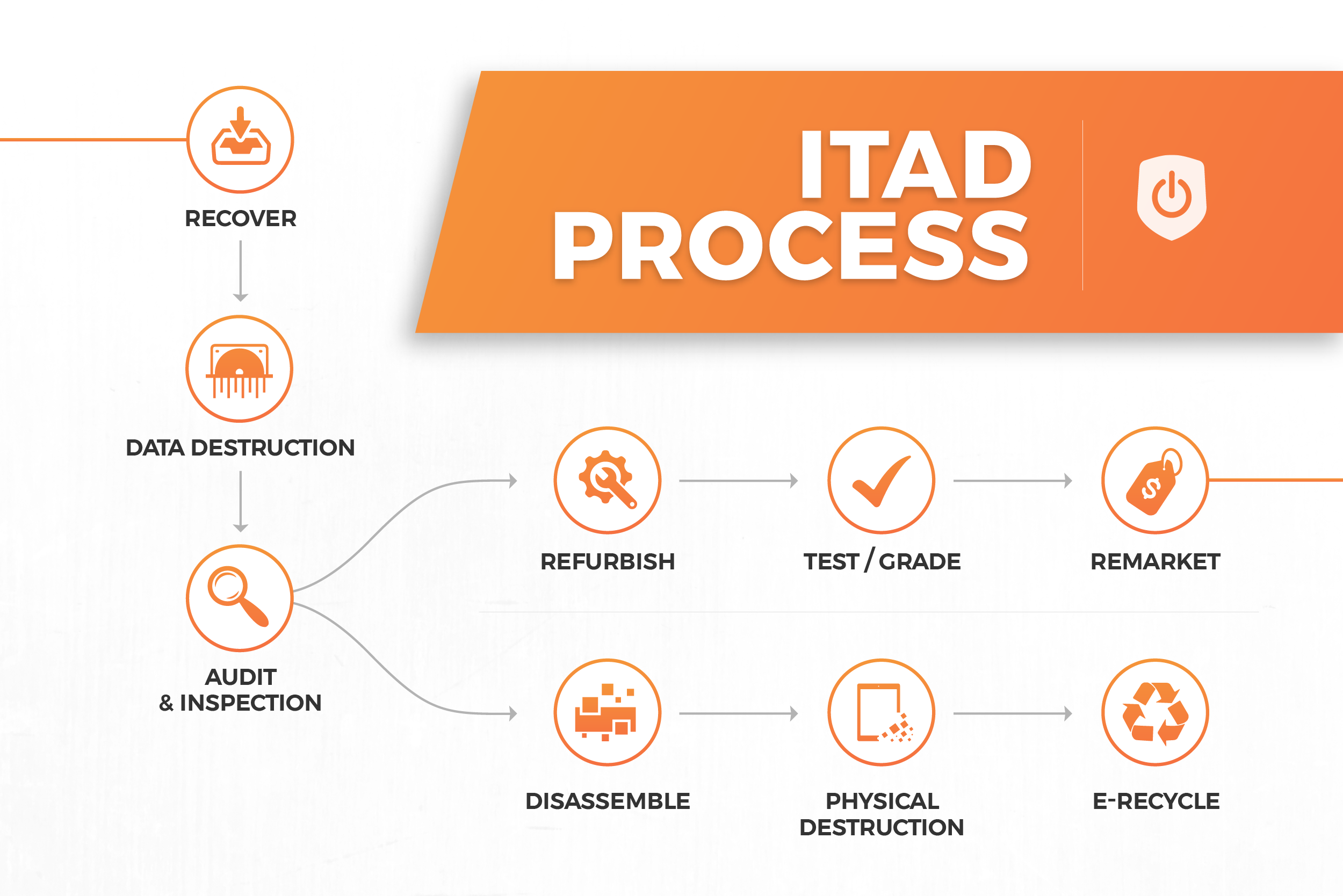
What is ITAD?
May 22, 2020
WHAT IS ITAD? WHY DO WE NEED IT?
Did you know that we are entering into a period where AI and the IOT are beginning to guide the changes to our global industry through constant automation? In direct correlation to that burst of automation is the enormous amount of data that is being created, tracked, and stored. However, most companies don't have a plan, or are not prepared for how to safely dispose of that data when the devices they are using are at the end of their life.
If you’re not familiar with the term ITAD (IT Asset Disposition), it is the industry that has organically emerged to manage those computers, laptops, phones, devices, etc. and handle that data. “... (ITAD) is the business built around disposing of obsolete or unwanted equipment in a safe and ecologically-responsible manner.” - Source (What is Tech Target). As our work lives continue to be lived online, the ITAD market is growing exponentially and creating great options for companies to safely dispose of their data.
Times are changing but mobile devices aren’t going anywhere. There are a reported 2 billion computers in the world, over 80% of homes worldwide have a personal computer, and 98% of US schools own computers - Sources (Statista, SCMO). But, what happens to those computers and smartphones once they hit the end of their life? This is where ITAD plays a crucial role. The ITAD industry safely collects and re-markets or recycles technology. ITAD is the hero most people have never heard of, working in the background to revolutionize how we safely discard the world’s technology.
Safe disposal is something we tend to overlook, but computers generate e-waste when it is dumped into a landfill, the precious metals used in manufacturing the devices are toxic to our ecosystem and have permanent effects on our environment. The disposal of mobile devices needs to be managed. The EPA report also stated that e-waste represents only 2 percent of the solid waste stream, but the amount accounts for 70 percent of the hazardous waste which is deposited in landfills. (source)
What can you do?
If you manage technology for a school, business, or organization, now is the time to create a plan for how to handle the devices when they become too old, or broken, or your fleet simply needs updated technology. Creating a device retirement plan is actually pretty simple and includes the following steps:
- Partner: Find an ITAD partner you can trust - look for certifications regarding recycling, and data erasure. The R2 (responsible recycling) certification ensures the highest standards are met for safe reselling or recycling. Also, a well-established partner has relationships to resell to ensure you get the highest ROI on your old IT assets.
- Budget: Understand that you will be getting money for retiring/selling your devices so make sure you consider adding that money back into your budget
- Plan: Set dates/timelines with your organization for when it is a good time to retire your devices:
- Schools tend to retire in the Summer, seasonal businesses will retire in their slow seasons, etc.
- The average retirement (called ‘buyback’) process takes 60 days from devices leaving your facility to a check being written
Other things to consider:
Set a refresh calendar for every 3-5 years, depending on the primary use of your device. Since technology moves fast, computers start becoming outdated pretty quickly, so consider when those devices will have the most value in the ITAD market. Typically, devices start becoming dated, but still have a high market value about 3-5 years after their release date.
Data destruction is a big concern for schools and businesses, but luckily with the right partner it can be a concern of the past. With strict data destruction requirements under the R2 certification, certified companies must prove their destruction process and are audited to ensure safe data destruction on every device. So, your best bet is to find a company or a recycler with the R2 certification.
If you’re looking for a partner, we can handle it all. Get a quote today!


